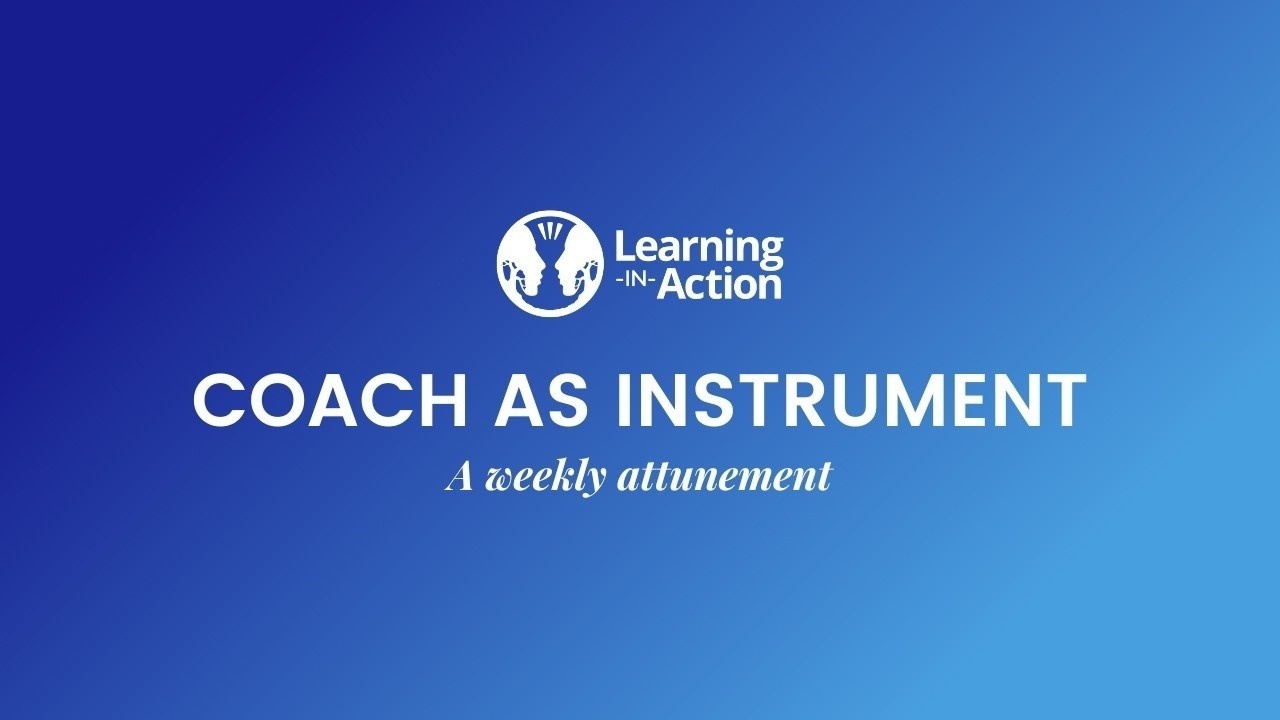Coach as Instrument: Are You Leading Your Client?
Oct 31, 2022
What I'm Pondering
So I can stay curious
“People are just as wonderful as sunsets if you let them be. When I look at a sunset, I don't find myself saying, "Soften the orange a bit on the right hand corner." I don't try to control a sunset. I watch with awe as it unfolds.”
― Carl R. Rogers, A Way of Being
I have a confession to make. I can be a difficult client. It’s true.
When I’ve been coached, I’ve been known to say, “that sounds more like your language than mine,” or “where are you going with that question?” Or when the coach and I stare at each other for an unnatural length of time without speaking, saying, “Your turn.”
I don’t mean to be difficult. I value what can come from coaching. AND I’ve found that I’m VERY sensitive to feeling like my coach is leading the conversation. And if the coach is leading the conversation, then the agenda is no longer mine. It’s theirs.
But aren’t coaches supposed to lead the conversation?
I’m a hard “no” on that, though I suppose you could get different responses from different coaches. If you see your job as a coach to drive the client to a particular outcome (one that perhaps at some point they said they wanted), then perhaps you see your job as leading the conversation to produce the client’s desired outcome.
But if you see your role as facilitating an organic process already underway within your client for the purpose of their growth and development, then that’s achieved through a client-led conversation.
And consistently maintaining a client-led conversation can be challenging.
What makes consistently allowing the client to lead so difficult?
In my observation of other coaches and myself, I sense that what makes it difficult at times to allow the client to lead is:
- Our believing we know where the client wants to go (they rarely do at a conscious level)
- Our believing that we know how to get the client where they want to go (how can we unless we are the client?)
- Our feeling responsible for getting the client to their desired outcome, to “add value” (how can we possibly be responsible for something so beyond our control?)
My sense is that most well-intended coaches don’t realize they are leading the conversation when they are. Why might that be? What might trigger us to lead a coaching conversation that we intend to be client-led?
Here are some possibilities:
- Something the client says or does triggers us in some way (e.g., perhaps the client’s distress triggers our need to rescue, perhaps the client’s issue is mirroring one of our own, perhaps we’re uncomfortable being with certain aspects of the client - their strong emotions or intensity)
- We aren’t sure what to do with what the client just said (as if we need to “do” something), so we go back to something that we do know what to do with
- Instead of being present with what’s emerging for the client, we are following some kind of coaching framework or formula or applying some coaching technique when it’s non-responsive to what’s emerging in the moment
These are all very human reactions. We aren’t perfect. We are as human as our clients.
So how do we ensure the conversation is client-led?
Here are some possibilities:
- Stay present with the client and their experience, noticing and bracketing any discomfort or triggering experience we are having.
- Work with what’s already emerging instead of adding something new.
- Not formulate our questions and instead allow them to come from our curiosity about what’s in the field and is already happening.
- Release responsibility for the client’s outcome.
- Trust that everything that’s needed to meet the client in the moment is in the energetic field between us and the client.
So, in your future coaching sessions, consider asking yourself throughout the session, “Who’s leading?” If you’ve been practicing for any period of time, you’ll know if you are.
And if you sense you are leading, that’s ok. You can brush it off and trust the enoughness of what’s already available.
Note: I’m grateful to my friend and colleague, Ann Wright, for her input on this newsletter.

